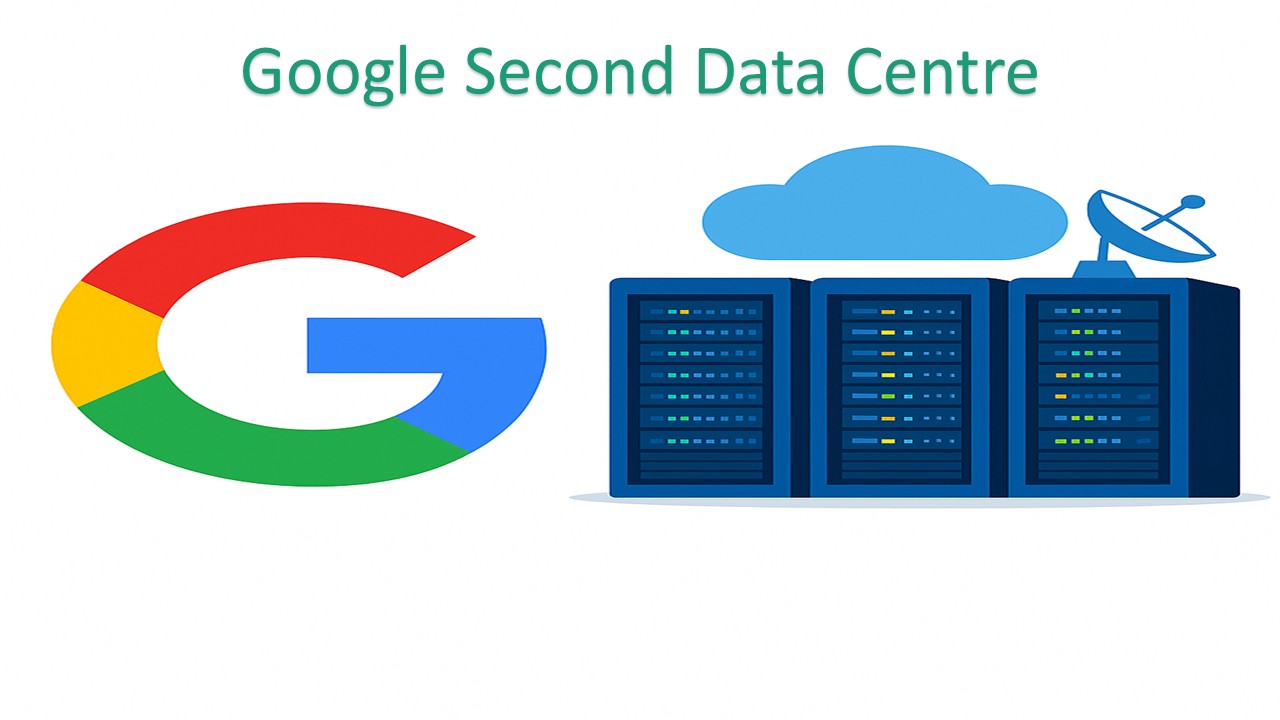
हिंदी में पढ़ने के लिए मेनू बार से हिंदी भाषा चयन करें।
🚀 Rising Demand for Data Center Capacity in India
India’s digital economy has been expanding rapidly, driven by AI workloads, video streaming, e-commerce growth, cloud adoption, IoT proliferation, and more. According to real estate consulting firm Cushman & Wakefield, India’s total data center capacity surpassed 1.21 GW by the end of 2024. By 2025, an additional ~230 MW was added, and another 250 MW is forecast for 2025–26, elevating the total to approximately 1.46 GW.
Hyderabad stands out among Indian cities as a fast-growing hub. By late 2024, it had overtaken Chennai to become India’s second-largest data center market by capacity. Major hyperscale developments are reshaping the landscape, including infrastructure by CtrlS, NTT, AWS, Microsoft, and now Google.
Hyderabad’s Rising Role in the Data Center Ecosystem
A convergence of favorable factors makes Hyderabad particularly attractive:
- Government Support: Telangana’s investment-friendly policies, including streamlined approvals, land and electricity incentives, and the T-Fiber project for improved broadband infrastructure.
- Geographic Suitability: Low seismic risk, availability of water resources, and advantageous climate facilitate efficient cooling and backups.
- Existing IT Ecosystem: A large presence of multinational R&D centers, including Google’s major campus in Gachibowli, enhances talent, connectivity, and scale.
- Industry Momentum: CtrlS’s Gachibowli “DC3” launched with 13 MW load capacity. Meanwhile, NTT and Neysa Networks plan a 400 MW AI‑focused cluster in Hyderabad. Airtel Nxtra has also disclosed 200 MW capacity plans for the city.
By all measures, Hyderabad is emerging as a national powerhouse in data storage and compute.
Google’s Strategic Move: First vs. Second Data Center
Google Cloud currently operates data center zones in Mumbai and Delhi NCR, which continue to grow in capacity to meet regional demand, including for Gemini AI model workloads.
Establishing a second data center in Hyderabad would mark Google’s first hyperscale facility outside those two zones in India. This aligns with its global expansion strategy—building second data centers in key regions, exemplified by its second Latin America center in Uruguay announced in August 2024 (over $850 million investment).
Such hyperscale centers typically exceed 100+ MW capacity and are designed to support enterprise-grade cloud services and AI/ML workloads with low latency, cache services, resilience, and compliance.
Why Google Chooses Hyderabad: Key Advantages
- Reduced Latency & Improved Performance
Hosting Google Cloud closer to South and Central Indian users improves application performance and user experience. - Regulatory Compliance & Data Localisation
Storing data within national borders helps meet Indian government policy and industry rules around sensitive data handling. - Fault Tolerance & Disaster Recovery
A distributed infrastructure reduces dependence on one region and ensures business continuity, even under natural or human disruptions. - Sustainability & Renewable Energy
Google emphasizes sustainable operations, aiming to power its data centers with renewable energy—a practice followed in its other facilities. - Local Jobs & Ecosystem Growth
Each data center brings hundreds of operations and maintenance jobs. Overall, the data center boom supports thousands of additional roles in construction, IT, networking, and security.
Challenges & Considerations
- Power & Water Resources
Hyperscale centers require hundreds of megawatts of power and large water supplies. Google must secure long‑term energy supply, likely through renewable Energy Purchase Agreements (EPAs). - High CapEx
Capital investments for such a facility can easily exceed several hundred million dollars. Government incentives, tax relief, and utility rates will factor into economic viability. - Connectivity Infrastructure
Robust fiber networks and redundancy are essential. Hyderabad, with its growing digital infrastructure, remains well‑positioned, but additional subsea cable landing points would be beneficial. - Environmental Impact & Community Engagement
Large data centers consume significant water and energy. To address concerns, Google will need strong Environmental Clearances, transparent community dialogue, and sustainable designs.
Aligning With India’s Data Center Boom
India’s data center landscape is expanding rapidly, with projections indicating roughly 250 MW of additional capacity in 2025. Cities like Pune and Delhi NCR are also contributing to this build-out.
Hyperscale data center projects underway include:
- CtrlS: Gachibowli 13 MW DC3; also planning a 600 MW campus in Hyderabad.
- NTT & Neysa: 400 MW AI‑cluster announced.
- AWS: Hyderabad region launched in 2022; expansion ongoing.
- Microsoft: Eight data centers planned across Telangana by 2035, despite environmental concerns in Mekaguda.
- Airtel Nxtra: 200 MW facility under construction.
Google’s second data center would further strengthen Hyderabad’s position as a major digital infrastructure hub, alongside Goa, Chennai, Mumbai, and Delhi.
What to Expect from the Second Google Data Center
- Launch Timeline
While the initial Google Cloud region India East 2 was announced in 2020–22, a second data center in Hyderabad would logically come online in 2026–27, in sync with other hyperscalers’ expansion timelines. - Capacity & Features
The facility will likely be hyperscale (100+ MW), enclose advanced cooling systems, tight physical and cyber‑security, and support GenAI workloads. - Green Commitment
Google has committed to operating on 24/7 carbon-free energy globally. Hyderabad’s renewable energy potential makes it viable for this goal. - Economic Footprint
Throughout its construction and operational life, the data center will generate jobs, boost service providers, and develop vendor ecosystems around efficiency, maintenance, and support services.
A Milestone in India’s Digital Journey
Google’s decision to build a second data center in Hyderabad reflects more than just infrastructure expansion—it signals India’s maturation as a world-class digital market. This aligns with:
- Global Tech Trends: Hyperscalers building multiple regional hubs near users and data sources.
- Digital Sovereignty: Localized data control, compliance and resilience.
- Tech-Driven Growth: Infrastructure that supports AI, enterprise applications, IoT, and edge services.
- Sustainability: Emphasizing green operations and community impact.
While an official announcement would confirm capacity, staffing, timelines, and investment, current signals and Hyderabad’s trajectory indicate a high probability that Google’s second data center is on the horizon.
Looking Ahead
- Watch for official releases on Google Cloud India’s website or press statements from Telangana’s government.
- Monitor industry reports for land acquisition, environmental special clearances, and partnerships.
- Track ecosystem growth—local vendors, energy suppliers, construction contractors, and skill development programs.
Once fully operational, Google’s new data center will serve as a vital platform underpinning the next wave of digital innovation across India and the wider region.




































































